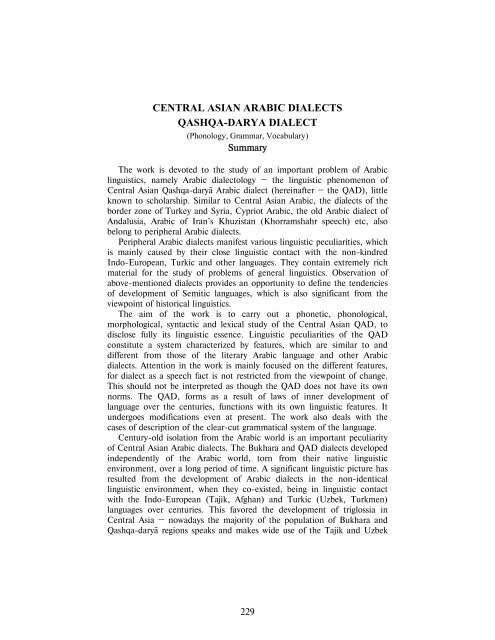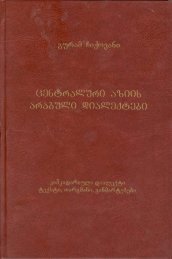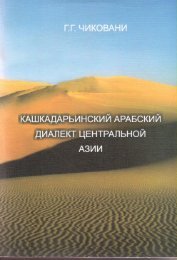Create successful ePaper yourself
Turn your PDF publications into a flip-book with our unique Google optimized e-Paper software.
CENTRAL ASIAN ARABIC DIALECTS<br />
QASHQA-DARYA DIALECT<br />
(Phonology, Grammar, Vocabulary)<br />
Summary<br />
The work is devoted to the study of an important problem of Arabic<br />
linguistics, namely Arabic dialectology – the linguistic phenomenon of<br />
Central Asian Qashqa-daryÁ Arabic dialect (hereinafter – the QAD), little<br />
known to scholarship. Similar to Central Asian Arabic, the dialects of the<br />
border zone of Turkey and Syria, Cypriot Arabic, the old Arabic dialect of<br />
Andalusia, Arabic of Iran’s Khuzistan (Khorramshahr speech) etc, also<br />
belong to peripheral Arabic dialects.<br />
Peripheral Arabic dialects manifest various linguistic peculiarities, which<br />
is mainly caused by their close linguistic contact with the non-kindred<br />
Indo-European, Turkic and other languages. They contain extremely rich<br />
material for the study of problems of general linguistics. Observation of<br />
above-mentioned dialects provides an opportunity to define the tendencies<br />
of development of Semitic languages, which is also significant from the<br />
viewpoint of historical linguistics.<br />
The aim of the work is to carry out a phonetic, phonological,<br />
morphological, syntactic and lexical study of the Central Asian QAD, to<br />
disclose fully its linguistic essence. Linguistic peculiarities of the QAD<br />
constitute a system characterized by features, which are similar to and<br />
different from those of the literary Arabic language and other Arabic<br />
dialects. Attention in the work is mainly focused on the different features,<br />
for dialect as a speech fact is not restricted from the viewpoint of change.<br />
This should not be interpreted as though the QAD does not have its own<br />
norms. The QAD, forms as a result of laws of inner development of<br />
language over the centuries, functions with its own linguistic features. It<br />
undergoes modifications even at present. The work also deals with the<br />
cases of description of the clear-cut grammatical system of the language.<br />
Century-old isolation from the Arabic world is an important peculiarity<br />
of Central Asian Arabic dialects. The Bukhara and QAD dialects developed<br />
independently of the Arabic world, torn from their native linguistic<br />
environment, over a long period of time. A significant linguistic picture has<br />
resulted from the development of Arabic dialects in the non-identical<br />
linguistic environment, when they co-existed, being in linguistic contact<br />
with the Indo-European (Tajik, Afghan) and Turkic (Uzbek, Turkmen)<br />
languages over centuries. This favored the development of triglossia in<br />
Central Asia – nowadays the majority of the population of Bukhara and<br />
Qashqa-daryÁ regions speaks and makes wide use of the Tajik and Uzbek<br />
229





